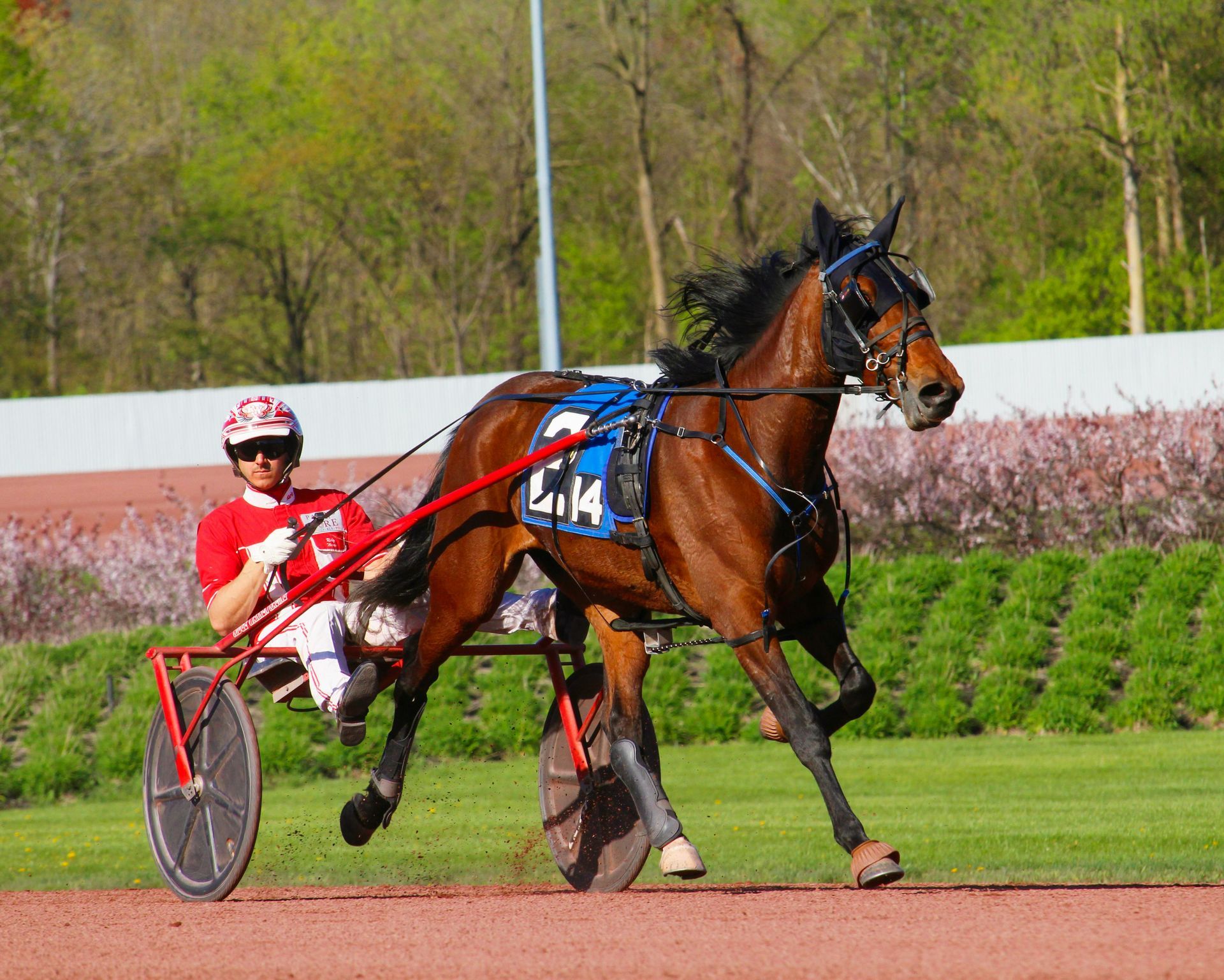Keeping the Field Clean: Understanding Drug Testing in Harness Racing

The thrill of the race, the bond between human and horse, the roar of the crowd – harness racing is a sport steeped in tradition and excitement. But underpinning the integrity of this spectacle is a robust system of drug testing, designed to ensure a level playing field for all participants, both equine and human.
For punters, owners, trainers, and drivers alike, understanding the rules and regulations surrounding drug testing is crucial for maintaining confidence in the sport. So, let's delve into the key aspects of drug testing in harness racing.
Testing the Stars of the Show: Equine Drug Testing
The welfare of the horses is paramount, and ensuring they compete free from prohibited substances is a cornerstone of fair racing. Harness Racing implements a comprehensive drug testing program for horses, pre-race, post-race, and out of competition.
What substances are prohibited?
The list of prohibited substances is extensive and regularly updated, aligning with national and international standards. Generally, it includes:
🐴
Stimulants:
Designed to artificially enhance performance.
🐴 Depressants: Substances that could mask pain or affect a horse's natural abilities.
🐴 Anabolic Steroids: Promoting muscle growth and strength unnaturally.
🐴 Pain Masking Agents: Preventing the detection of underlying injuries.
🐴 Certain medications: Unless administered under strict veterinary supervision and within specified withdrawal periods.
When and how are horses tested?
🐴
Pre-Race Testing: In some instances, horses may be subject to pre-race testing, on a random basis or based on the race they are competing in. This usually involves collecting a urine or blood sample before the horse competes, and having it tested either prior to the race or after.
🐴
Post-Race Testing:
This is the most common form of testing. After a race, designated horses (often winners, placegetters, or randomly selected participants) are taken to a secure sampling area. Harness Racing officials oversee the collection of urine and/or blood samples, ensuring the integrity of the process and proper identification of the horse.
🐴
Out-of-Competition Testing:
To further deter the use of prohibited substances, Harness Racing can conduct out-of-competition testing at training facilities or other locations. This helps monitor horses throughout their preparation and ensures compliance beyond race days.
The Sampling and Analysis Process (and the Importance of Scrutiny)
The collection of samples is a controlled process, with strict protocols to prevent tampering or misidentification. Samples are then sent to accredited laboratories for analysis using sophisticated techniques. However, even with stringent procedures, the possibility of errors, albeit rare, cannot be entirely discounted.
In the event of a positive test, it is crucial for trainers and owners to have the right to a thorough investigation. This includes access to the data packs generated by the testing laboratory, which contain detailed information about the analytical process and the levels of the detected substance. Scrutinising these data packs and the reported levels is vital. For instance, a very low level of a substance might warrant further investigation into potential environmental contamination or inadvertent exposure, rather than intentional administration for performance enhancement.
Consequences of a Positive Equine Test
A positive test can have severe repercussions for trainers, owners, and the horse itself. Penalties can include:
🐴
Disqualification: The horse's result in the race is voided.
🐴 Fines: Significant financial penalties for trainers and owners.
🐴 Suspensions: Temporary or permanent bans from participating in harness racing for trainers and owners.
🐴 Horse Restrictions: The horse may be stood down from racing for a specified period.
Harness Racing operates under an absolute liability principle, meaning the trainer is generally held responsible for any prohibited substance found in their horse, regardless of how it entered the horse's system.
This absolute liability underscores the importance of the right to investigate potential errors in the testing process by examining the data and levels reported.
Ensuring Fair Play for Humans: Driver Drug Testing
The integrity of harness racing also extends to the drivers who guide these magnificent animals. Harness Racing has regulations in place to ensure drivers are not competing under the influence of drugs or alcohol that could impair their judgment and potentially endanger themselves, other participants, and the horses.
What substances are prohibited for drivers?
The prohibited substances for drivers generally align with those banned in other professional sporting codes and include:
🐴
Illicit drugs:
Such as marijuana, cocaine, and amphetamines.
🐴 Performance-enhancing drugs: Substances designed to give a driver an unfair advantage.
🐴 Alcohol and other certain prescription medications: If they could impair a driver's ability to drive a sulky safely. Drivers are typically required to declare any medications they are taking.
When and how are drivers tested?
🐴
Race Day Testing:
Drivers can be randomly selected for drug and alcohol testing on race days, either before or after their engagements. Breathalyzer tests are commonly used for alcohol, while saliva or urine samples may be collected for drug testing.
🐴 Out-of-Competition Testing: Similar to equine testing, drivers may also be subject to out-of-competition testing.
Consequences of a Positive Driver Test
A positive drug or alcohol test for a driver can result in significant penalties, including:
🐴
Suspensions:
Temporary or permanent bans from driving in harness races.
🐴 Fines: Financial penalties.
🐴
Loss of License:
Potential revocation or suspension of their driver's license.

Senior Solicitor
Email: kristen@hntlegal.com.au
Author
List of Services
-
Matthew HammondMatthew Hammond Matthew Hammond
-
Vivian NguyenVivian Nguyen Vivian Nguyen
-
Maria ValenzuelaMaria Valenzuela Maria Valenzuela
-
David CleverleyDavid Cleverley David Cleverley
-
Peter MorrisPeter Morris Peter Morris
-
Andrew PaciniAndrew Pacini Andrew Pacini
-
Marie-Cecilia FerreiraMarie-Cecilia Ferreira Marie-Cecilia Ferreira
-
Jabour HaddadJabour Haddad Jabour Haddad
-
Razeeha ReillyRazeeha Reilly Razeeha Reilly
-
Jack DunnJack Dunn Jack Dunn
-
Melanie KorialMelanie Korial Melanie Korial
-
Mahdi RahimzadaMahdi Rahimzada Mahdi Rahimzada
-
Albert ThaiAlbert Thai Albert Thai
-
Martin AbdelsayedMartin Abdelsayed Martin Abdelsayed
-
Jamie-Lee MerhiJamie-Lee Merhi Jamie-Lee Merhi
-
Rachel SiewRachel Siew Rachel Siew
-
Dajana PopovicDajana Popovic Dajana Popovic
-
Sarah FoddaSarah Fodda Sarah Fodda
-
Lina VoLina Vo Lina Vo
-
Andre BarkhoAndre Barkho Andre Barkho
-
Alessia GiglioAlessia Giglio Alessia Giglio
-
Alexander BatshonAlexander Batshon Alexander Batshon
-
Gauri KoteraGauri Kotera Gauri Kotera
-
Michelle GalaritaMichelle Galarita Michelle Galarita
-
Bea OctavaBea Octava Bea Octava
-
Georgia MoaitGeorgia Moait Georgia Moait
-
Bridgette EdmundsBridgette Edmunds Bridgette Edmunds
Share to










